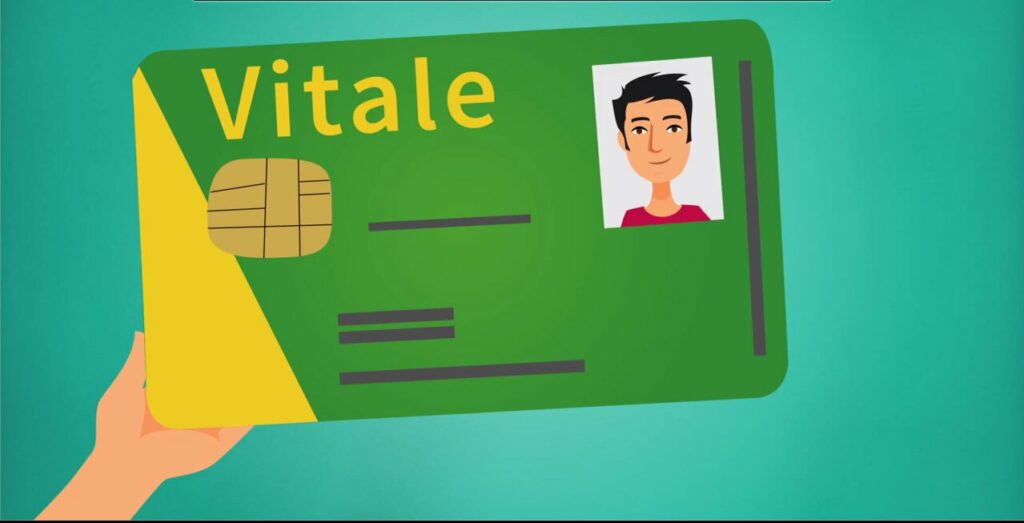You’ve probably caught on, that like everything else in France, the reimbursement process after visiting a doctor can be quite complex. This article will not be an exact guide explaining the way it works in great detail, we thought it would be too long and boring to read.
We’ll give you an overview of the main aspects and provide you with some tips that should make you able to navigate and understand most of the situations you’ll find yourself in!
Save money when you visit the doctor in France
Parcours de soin and médecin traitant
Before going to the doctor in France, you need to know these two concepts:
- Parcours de soin (pathway of health): follow these steps in order to not have a huge medical bill
- Médecin traitant (your assigned GP): a practitioner that you chose and you’ll always see as your GP.
What is the Parcours de Soin?
You may already know that France has a generous health care system, and it’s true. Most French people don’t understand how good they have it and won’t stop complaining about “La Sécu”, the social security. This generosity implies that France spends a lot of money in its social system (around €700.000.000 each year).
In order to regulate the spendings, France implemented a system called “Parcours de Soin” (health pathway).
What does the Parcours de Soin entail?
Simply, you have to see a GP before going to a specialist. If you’re don’t get a referral to a specialist by a GP, your fees may increase.
When I say specialist, I include all the doctors that you hope to never see in your life (gastroenterologists, etc…).
Dentists and ophthalmologists are not specialists, you can go and see them as you please.
Does any GP work as a reference?
Theoretically no. In order to go and see a specialist, you should first make a stop at your main “médecin traitant”. It is, however, you technically can see any GP to get a reference, even if he is not your own.
What is a médecin traitant?
The médecine traitant can be a GP, but isn’t always. It could be your homeopath, your gynecologist etc. Basically, it’s a health professional who knows you a bit better than the others.
How do I select my médecin traitant ?
- Go online in your “assurance maladie” personal space.
TIPS :
- In order to log in, you’ll need your social security number (here is how to get one)
- The French government set up a system that helps you connect to different bodies of the administration like the taxes (Impôts), the health system (Améli) etc. It’s called France Connect and it’s awesome.
- After logging in, click on the “Mes informations” category in the top-right-hand corner and fill in the info.
Or you just ask the doctor to be your “médecin traitant” during your consultation and they’ll do the thing for you on their computer.
Timeline
Let’s take a look at what it will look like with my friend Napoleon. He’s been having a stomach ache for some time now and he is a busy guy, a lot of countries to conquer etc. He hasn’t had time to look at what to do yet.
What? There are different types of reimbursement?
Yes, there are! The amount you will get reimbursed for your medical expenses will depend on :
- The types of doctor you go and see and if he is Secteur 1 or Secteur 2
- The nature of the procedure
- The coverage you have from a possible private insurance (a mutuelle / assurance complémentaire)
What are the different types of doctors ?
There are two types of doctors in France:
- Conventionné or Secteur 1: it means that you’ll be reimbursed with the Social security barema. That‘s the case for most GPs and it’s mentioned on their Doctolib profile. In short, it means you won’t have to pay too much because most of it is covered by Social security.
- Non-conventionné or Secteur 2: it means the reimbursement barema from Social security won’t apply to the whole cost and you may pay more (dépassement d’honoraire).
Be advised that the payment to a doctor is called an “honoraire” and the Secteur 2 doctors go above the normal honoraire, hence the “dépassement d’honoraire” (extra fees). For some treatments and actions, Secteur 1 can also add some extra fees.
How does the reimbursement for medical expenses work in France?
We’ll not go into much details, but there are two concepts to remember :
- La base de remboursement: what is the amount covered by the Social security
- Le taux de remboursement (rate) : the fraction of the covered amount that you will get back
Also, as the Social security does not cover all of the medical costs, you can take, personally or through your work a mutuelle or complémentaire santé, which are private health insurances.
Let’s take a couple of examples with the help of our friend Napoleon. He doesn’t feel very good and needs to go and see a specialist. But first, he checks with his “médecin traitant”, in order to get a referral..
Going to the GP without additional fees
He goes to the GP and pays 25€. Social security covers up to 25€, meaning he is fully covered.
However, the rate is only 70%. So, he’ll get back 70% of the amount he paid (minus a deductible of 1€).
The remaining 30% is called “ticket modérateur” in France and is what you have to pay to reach 25€. Some of it can be paid by your private insurance, depending on the contract you have.
In this example, the doctor belongs to Secteur 1 (no extra fee, no dépassement d’honoraires).
Going to a Specialist
Let’s say now, that my friend Napoleon needs to go and see a specialist, to whom he’s been referred by his “médecin traitant”. The specialist is Secteur 1 but requires medical work that will trigger an extra fee (dépassement d’honoraires).
Napoleon pays €500 for the procedure. Social security covers up to €400 and the rate is 50%. So, he’ll get back €200 (minus the €50 of deductible).
Now €300 remain: €200 of co-payment and €100 of extra fees that can be covered by the private insurance, depending on the contract.
This is a fictional example, these figures used do not reflect in any way the costs you may have for a procedure.
How do I get my money back ?
There are two ways to get your money back after a visit to the doctor.
If I have a Carte Vitale
This is the easiest process. You have nothing to do. You’ll just hand in your Carte Vitale to the doctor and you’ll just wait and relax to get your funds back. The money you’ll get covers the Social security + mutuelle reimbursement, if you have a mutuelle.
The process can take up to 3 weeks.
Here is an article about the Carte Vitale that explains how to get one.
If I don’t have a Carte Vitale
The process gets a bit tricky. The doctor (and the pharmacist if you need medicine) will give you a form (feuille de soin) that you’ll need to fill out with :
- Your name
- Your social security number
You’ll need to send it then to the CPAM (Caisse Primaire d’Assurance Maladie), the body of government that handles certain healthcare actions. To know the address where to send, it’s very simple, just click there.
If you’re in Paris, kudos, that’s the address displayed underneath. Otherwise, just click on “Changer” and type in your zip code.


